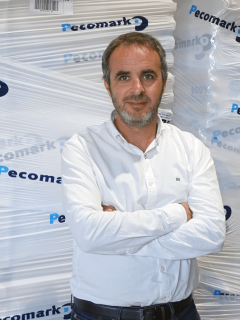Stock management, deliveries, order preparation, new hygiene and security measures, … During the confinement, e-commerce warehouses had to reorganise an important part of their internal structure and even today, with the pandemic still active, many of them still maintain these measures.
Our clients include many e-commerce companies, and we wanted to find out, first hand, how this period has impacted them.
We start this series of several posts with Tradeinn.
The largest online sales platform for sports equipment, based in Girona, experienced a significant increase in sales after a few weeks of stagnation.

To find out how they faced this unexpected crisis, what measures they took, and what their growth prospects are, we interviewed David Martín, CEO of Tradeinn.
Tradeinn in figures

- 15 online shops
- Sales in more than 190 countries
- More than 5 million customers worldwide
- Turnover 2019:188 million € (+40% vs 2018)
- Target turnover 2020: 250 million €
- They prepare more than 15,000 orders per day
- Its logistics centre has a surface area of 15.600m2
how did an e-commerce that sells in more than 190 countries react to the declaration of a global pandemic?
Like everyone else, we were very nervous, wondering what would happen, whether we would be able to continue operating or not… But I think that selling in so many countries is a clear advantage, because as our market is so diversified, there have been countries where the impact of the virus has been less or practically nil.
It is true that there have been countries, such as Italy, where the situation has been very difficult, and in Spain we have also been very bad. But, on the other hand, there have been other countries where, when the virus was hitting hardest here, there was hardly any impact. As a result, sales have been very different. To give you an idea, there were countries where we were decreasing, countries where we were the same as last year, and others where we were even growing.
how has the crisis situation caused by the pandemic affected Tradeinn’s turnover?
It is true that in the first 2 weeks, as we were very affected in Spain and Italy, we noticed a drop in demand. We had an annual growth of 30% until then, and we started to decrease a little. But after the first 2 weeks, just the week of Easter, demand increased again. People were a little more confident again, and it is also true that the physical shops were closed and you could only buy online. And we started to grow and grow, and we reached a level of Black Friday sales. And we have been doing Black Friday for 3 months now!
what measures were put in place as a priority?
The first thing we did was that the whole office team teleworked, even a week before we all started teleworking so that there was no risk.
The second is that the logistics team in the warehouse continued to work to prepare the orders, obviously it is not possible otherwise, but we did put in place many precautionary and containment measures. For example, in addition to making available all the individual protection equipment such as masks, gloves and hydroalcoholic gel in all locations of the warehouse, what we also did was to modify the shifts.
Our warehouse works 3 shifts during the week (morning-afternoon-evening-night) and the measure we adopted was to reduce the working day of each shift by 1 hour so that the shifts did not coincide with each other at the entrances and exits. And every time there was a change of shift, we had a cleaning company come in to disinfect the common areas. The aim was that, if any contagion was detected in any shift, it would only affect that one and the activity could continue. And then shifts 4 and 5 that we have at weekends, also worked an hour less for the same reason.
At the brand level, the situation has not been the same for all of them. We have to take into account that we work with many brands, which have very different realities and are in very different countries. In the case of the brands that do have their headquarters in Italy, and some that have their headquarters in Spain, it is true that for a month we suffered delays in delivery, because some of them even closed and for two weeks they did not send anything. And others only sent once a week. But of course, for the brands that we have with headquarters in less affected countries there has not really been an impact in this sense of lack of stock. This situation has also protected us quite a lot.
Given the increase in sales during this period, how did the transport sector behave? Was it generally possible to meet delivery deadlines with customers?
We had to lengthen delivery times a little on the website, because it is true that some transport companies were very saturated. But also taking into account that the end customer was aware of the extraordinary situation in which we were immersed, the delivery time was not as important a metric as before. The customer was more understanding and was willing to wait a little longer given the situation.
In terms of packaging, how did you deal with the flood of orders and how do you assess the collaboration and reactivity of the RAJA® Sales Team during this crisis?
The truth is that it was very good, you were able to deliver the material very efficiently and quickly. And we didn’t have any problems with the delivery of the packaging material we needed. I think you also worked very well during this exceptional period. We don’t have any complaints, we are delighted.
In your opinion, what new challenges or opportunities are e-commerce facing after COVID-19?
The main challenge is that what COVID has done is to anticipate in a few years what would have happened naturally, that there will be more and more online buyers. It has helped many customers who had little confidence, or who had not yet started buying online, to overcome that barrier, as they could not buy in physical shops. And I think there is a percentage of offline buyers who are going to convert to online, and by that I mean that when this situation ends we will have a situation withmore online customers than pre-COVID and that is a great opportunity for the sector.
On a curious note, what are the products, or product ranges, that have seen the greatest growth in sales during the months of confinement?
What we noticed the most is that at the beginning of the pandemic, when you couldn’t leave the house, we started selling product categories that hadn’t sold so much until then. For example, rollers for cycling. We sold more rollers in 1 month than in the last 4 years combined. Something incredible, we sold more than 400 or 500 rollers every day. People were buying more material for doing sport at home. We ran out of stock, both ours and the brands we worked with, and it was a huge boom. The first 2 weeks, when demand dropped, we were saved by having these types of categories.
From your perspective as a consolidated e-commerce with an international presence, what advice would you give to e-commerce companies that are just starting out?
I think that in e-commerce it is very important to be very reactive and be able to make quick decisions. Time passes much faster in the online sector. There are things that can take a week or more offline, but online you can do things in hours or days. My advice is to execute quickly and be very reactive, because there is an opportunity cost, which is rarely measured, but it makes a difference. That and the ability to adapt to changes.
Thanks again to David Martin, CEO of Tradeinn, for sharing with us your experience and your vision of the future of e-commerce.














